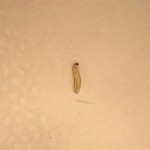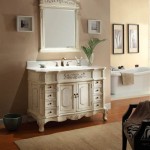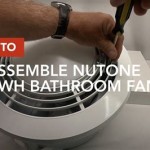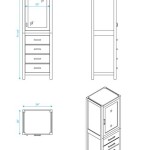RV Bathroom Sink Odor: Causes, Solutions, and Prevention
The confined space of an RV bathroom can quickly amplify unpleasant odors, and the sink is a common source of these issues. A lingering smell emanating from an RV bathroom sink not only detracts from the overall comfort but can also indicate underlying problems that require attention. Understanding the potential causes of these odors, as well as implementing effective preventative measures, is crucial for maintaining a clean and pleasant RV environment.
The plumbing system within an RV is often more compact and intricate than in a traditional home, making it susceptible to unique challenges that contribute to odor development. Factors ranging from drain clogs to sewer gas leaks can contribute to the pervasive smell. Addressing these issues promptly is important to avoid the odor becoming ingrained within the RV's materials and to prevent potential health concerns associated with prolonged exposure to certain gases.
Identifying the Root Cause of the RV Bathroom Sink Odor
Before implementing any solutions, accurately identifying the source of the odor is essential. Several factors can contribute to the unpleasant smell, and pinpointing the specific cause will dictate the most effective course of action. A systematic approach, involving visual inspection and careful consideration of the RV's plumbing system, will help determine the root of the problem.
One of the primary suspects is the buildup of grey water. Grey water is wastewater from sinks and showers. This water contains organic matter such as food particles, soap scum, hair, and skin cells. Over time, this organic waste decomposes within the drain pipes and the grey water tank, creating a breeding ground for bacteria. As the bacteria break down the organic matter, they release foul-smelling gases, including hydrogen sulfide, which is responsible for the characteristic "rotten egg" odor often associated with RV plumbing problems.
Another common culprit is a dry P-trap. The P-trap is the U-shaped section of pipe located beneath the sink. Its purpose is to trap a small amount of water, creating a seal that prevents sewer gases from rising up through the drain and into the bathroom. If the RV has been unused for an extended period, or if the P-trap is poorly designed or installed, the water can evaporate, breaking the seal and allowing sewer gases to escape. This results in a noticeable and unpleasant odor in the bathroom.
Ventilation issues can also contribute to RV bathroom sink odors. A properly functioning plumbing vent system allows air to circulate within the drain pipes, preventing a vacuum from forming when water drains. If the vent is blocked or improperly installed, the negative pressure can suck water out of the P-trap, again breaking the seal and allowing sewer gases to enter the RV. Additionally, inadequate ventilation can trap moisture and encourage the growth of mold and mildew, further contributing to unpleasant smells.
Finally, leaks in the plumbing system itself can be a source of odor. Even small leaks can allow grey water or sewage to seep into the RV's subfloor or walls, creating a hidden reservoir of decaying organic matter. These leaks can be difficult to detect initially, but the persistent odor and potential for water damage warrant a thorough inspection of all plumbing connections and pipes.
Effective Solutions for Eliminating RV Bathroom Sink Odors
Once the source of the odor has been identified, implementing appropriate solutions is crucial. The approach to resolving the problem will vary depending on the underlying cause, but several common methods can be effective in eliminating the smell and preventing its recurrence.
Cleaning the drain and grey water tank is often the first step in addressing RV bathroom sink odors. A combination of hot water and a mild detergent can help to flush out accumulated debris and organic matter. Specialized RV tank cleaning products are also available and can be particularly effective in breaking down stubborn buildup and eliminating odor-causing bacteria. Regularly flushing the grey water tank after each trip, or at least every few weeks during periods of heavy use, is a good preventative measure.
Addressing a dry P-trap is relatively straightforward. Simply running water down the drain for a few minutes will refill the trap and re-establish the water seal. To prevent the P-trap from drying out again during periods of disuse, consider pouring a small amount of mineral oil or RV antifreeze into the drain. These substances evaporate more slowly than water, providing a longer-lasting seal. Regular use of the sink is also a preventative measure, ensuring the P-trap remains full.
Checking and clearing the plumbing vent system is essential for proper drainage and odor control. Inspect the vent pipe on the roof of the RV for any obstructions, such as leaves, bird nests, or insect infestations. A garden hose can be used to flush out the vent pipe and ensure it is clear. If the vent system appears to be improperly installed or damaged, consulting with an RV technician is recommended.
If leaks are suspected, a thorough inspection of all plumbing connections and pipes is necessary. Look for signs of water stains, dampness, or corrosion. Tighten any loose connections and replace any damaged pipes or fittings. A plumber's putty or Teflon tape can be used to seal threaded connections and prevent leaks. Addressing leaks promptly not only eliminates the odor source but also prevents potential water damage to the RV's structure.
In some cases, the odor may be caused by mold or mildew growth in the bathroom. This is particularly common in areas with high humidity or poor ventilation. Cleaning the affected areas with a mold and mildew remover, and improving ventilation by opening windows or using a dehumidifier, can help to eliminate the odor and prevent its recurrence. Regularly cleaning the bathroom surfaces with a disinfectant cleaner is also a good preventative measure.
Preventative Measures to Minimize RV Bathroom Sink Odors
While addressing existing odors is important, implementing preventative measures is crucial for long-term odor control. By adopting a proactive approach to RV bathroom maintenance, it is possible to minimize the occurrence of unpleasant smells and maintain a clean and comfortable environment.
Regular cleaning of the bathroom sink and drain is essential. Wipe down the sink basin and faucet after each use to remove soap scum and spills. Periodically flush the drain with hot water and a mild detergent to prevent the buildup of organic matter. Using a drain strainer can also help to catch hair and other debris, preventing clogs from forming.
Practicing water conservation can also help to reduce grey water volume and minimize odor potential. Avoid letting the water run unnecessarily while brushing teeth or washing hands. Using low-flow faucets and showerheads can further reduce water consumption. This not only conserves water but also reduces the amount of organic waste that accumulates in the grey water tank.
Proper ventilation is crucial for preventing moisture buildup and odor development. Open windows or use the bathroom vent fan while showering or using the sink. This helps to remove excess humidity and prevent mold and mildew growth. Regularly inspect and clean the vent fan to ensure it is functioning properly.
Using RV-specific cleaning products is recommended. These products are formulated to be safe for use in RV plumbing systems and grey water tanks. Avoid using harsh chemicals or bleach, as these can damage the plumbing and harm the environment. RV tank cleaning products are designed to break down organic matter and eliminate odors without harming the tank or plumbing system.
Finally, regular maintenance and inspections of the RV's plumbing system are essential. Check for leaks, loose connections, and any signs of damage. Address any issues promptly to prevent them from escalating into more serious problems. Consulting with an RV technician for regular inspections and maintenance can help to ensure the plumbing system is functioning properly and prevent odor issues from developing.

Bad Smell Coming From Under The Rv Sink

What To Do When Your Rv Sink Smells Like Sewage Togo

How To Solve A Stinky Rv Sink Drain Problem

How To Eliminate Rv Odors Rvyall Com

8 Solutions For Eliminating Rv Odors And Stinky Toilet Smells

How To Clean A Stinky Sink Drain By Home Repair Tutor

Creative Rv Kitchen Water Pool Floor Drain Press Type Flying Saucer Anti Odor Cover Toilet Seal Stopper Temu

Camping S How To Keep That Bathroom Smelling Clean Windish Rv Blog

Rv Toilet Cleaning 4 Ways To Keep It Smelling Fresh Microbialogic

Rv Bathroom Sink Drain Stopper Universal Stainless Steel Bounce Plug Filter For 1 06 Push Type Basin Pop Up Chrome Strainer Temu







